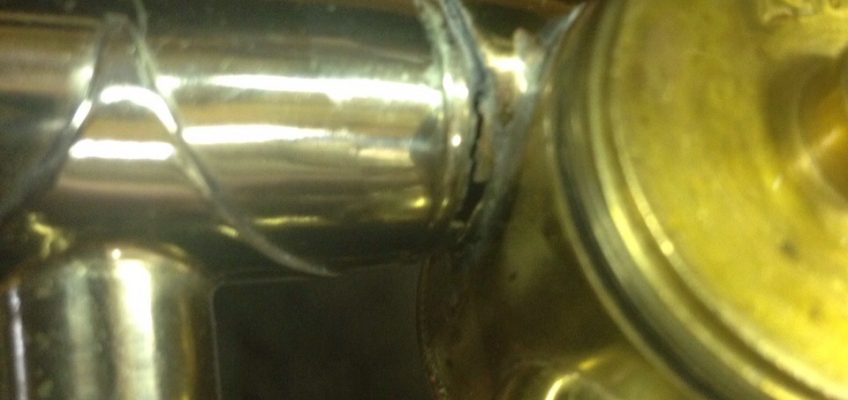TIP OF THE WEEK: In the image above you can see an interesting repair – a Bach Stradivarius bass trombone with a cracked handslide receiver-to-F Rotor casing knuckle. While not necessarily a common problem on bass or F-attachment trombones, it is something that we see from time to time. This is the small piece of curved tubing that connects the handslide receiver to the rotor casing. Typically this part is “brazed” on to the rotor casing (very high heat and hard solder) which makes a very strong bond between the tubing and casing. The downside to the brazing process is that the metal becomes “annealed” and soft. Therefore this area is subject to wrinkling, warping and eventually cracking (as seen in the picture). This damaged is typically caused by pressure on the “crook” or “bow” portion of the handslide while it’s attached to the bell section. Have you ever seen a trombone player resting their instrument fully upright with the slide crook on the floor while they are standing up? Sometimes I have even seen trombone players “rest” on their trombones and sort of “lean” on the instrument in this position. This puts an enormous amount of strain on the rotor knuckle and will eventually crinkle and crack. This damage can also occur from a “shock” to the handslide section, essentially turning it in to a giant lever and placing lots of torque on the knuckle. The moral of the story is to be careful with the handslide! Be sure to share this information with trombone players that are using F-attachment or double-rotor bass trombones – it could save them a very costly repair!

